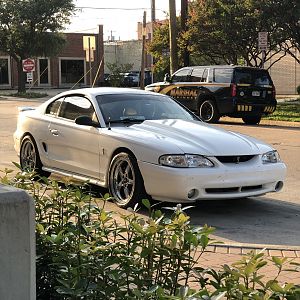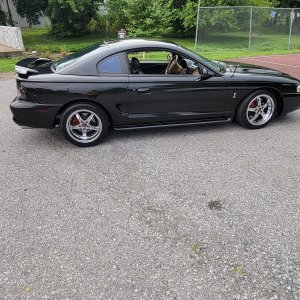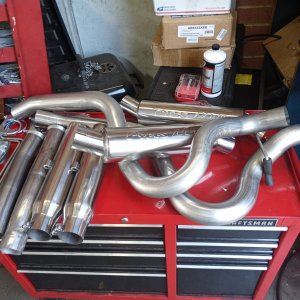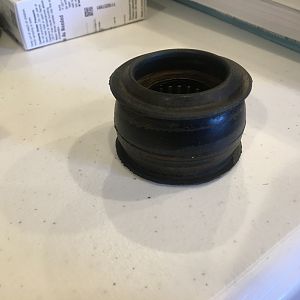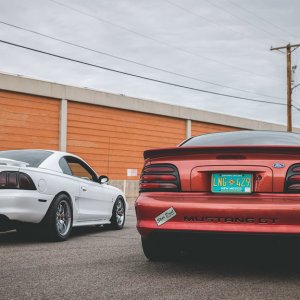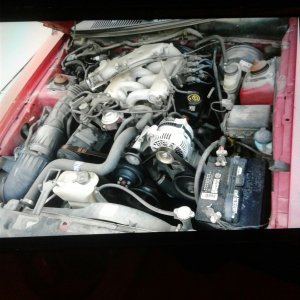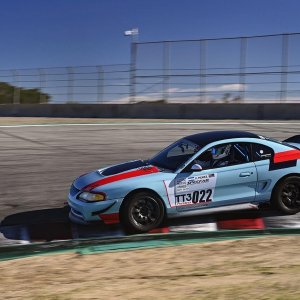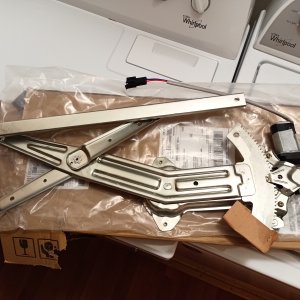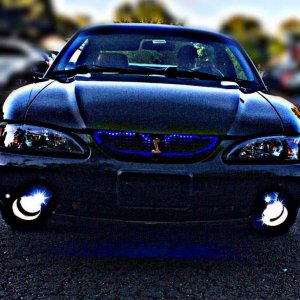Burninrock24
Active Member
I race in a 4cyl class at my local track but the same stuff all applies. It's just physics. Also, there are some images that I made. Some redundant info, but the visuals hammer it home.
Camber: You should know the basis of camber. Negative and the wheels tilt inwards with the bottoms flared out more, positive is the opposite. You always want negative camber. Always.
How to set your camber: Run the track for a few laps. Make sure your tires are nice and hot. Then get a good point-specific laser temperature gauge and measure the inside edge, middle, and outside edge of each tire immediately after your run. Your goal is to make these temperatures even. So if your inside measures: 195* middle: 185* and outside: 175* then you are running too much negative camber. If these were in the opposite order, you would know that you aren't running enough camber.
Too many people go putting too much camber on their cars, but remember the more negative your outside tire is, your inside tire will be even more negative, so by setting your camber properly based on temperatures, you are maximizing your total contact patch. Where a too negative setting might be fine for the outside tire, your inside tire is barely contacting the pavement.
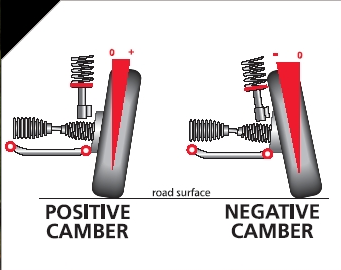
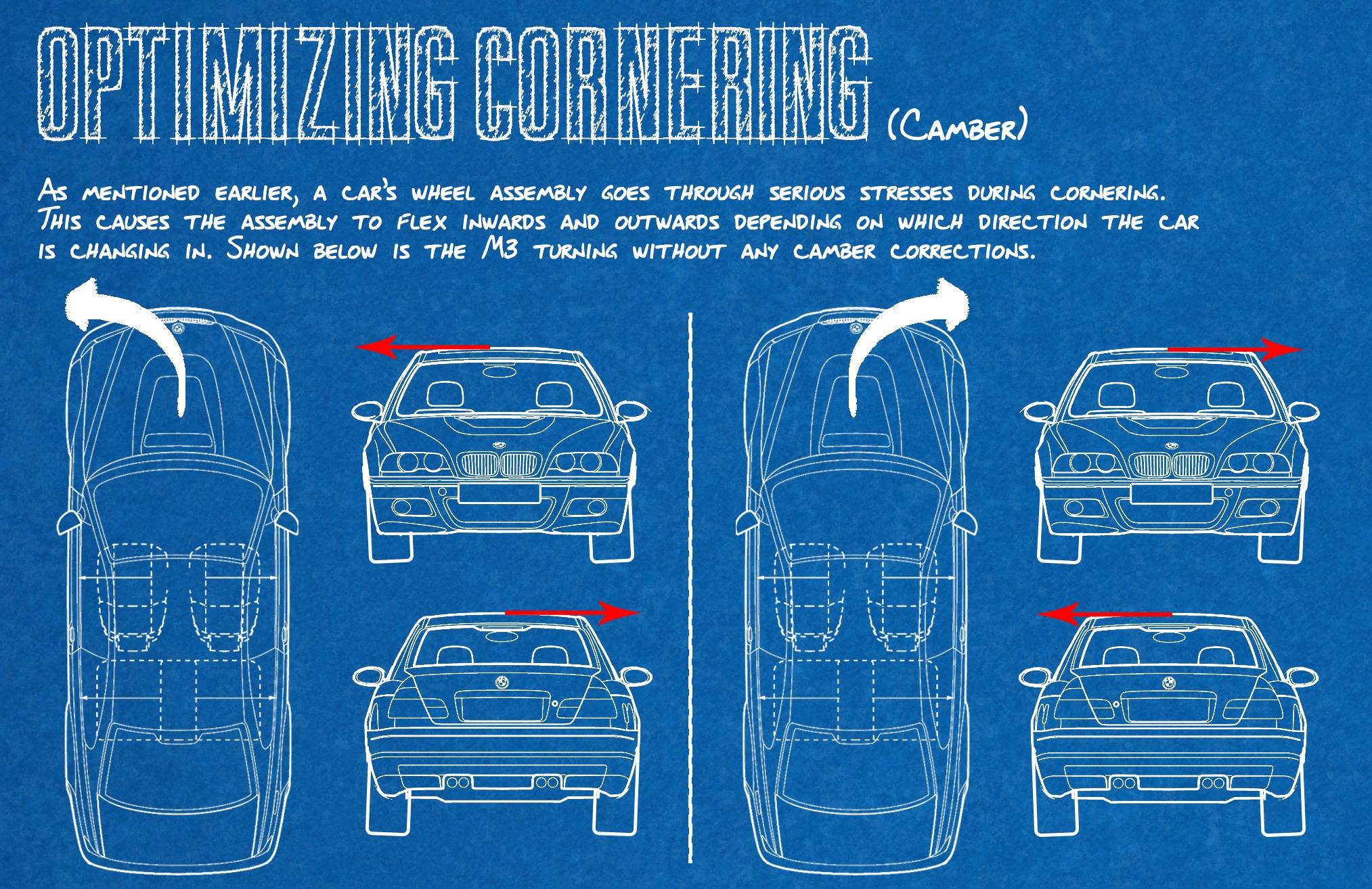
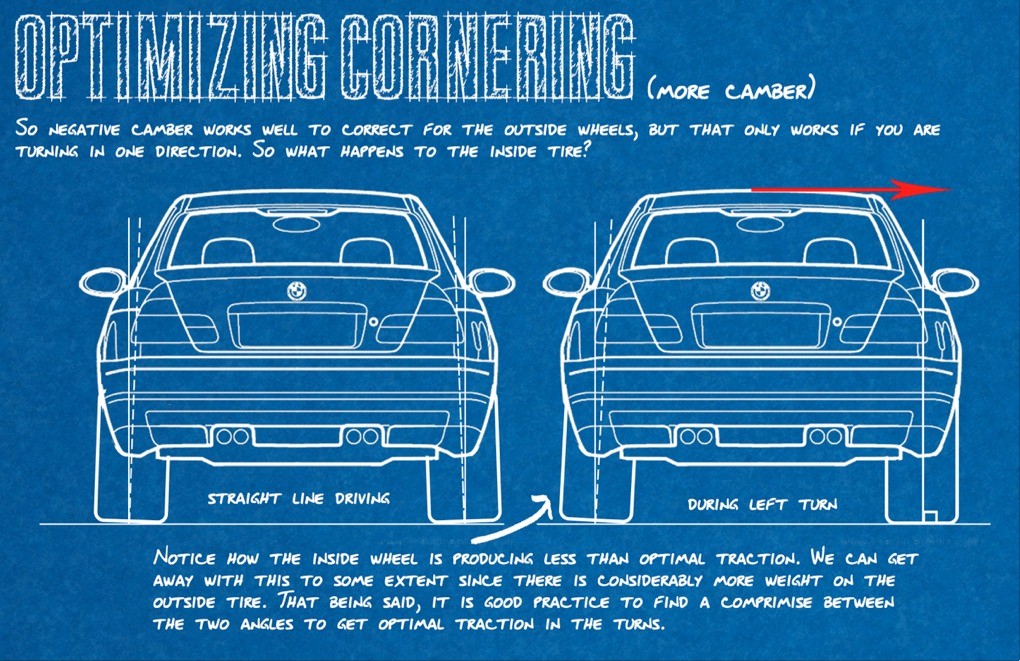
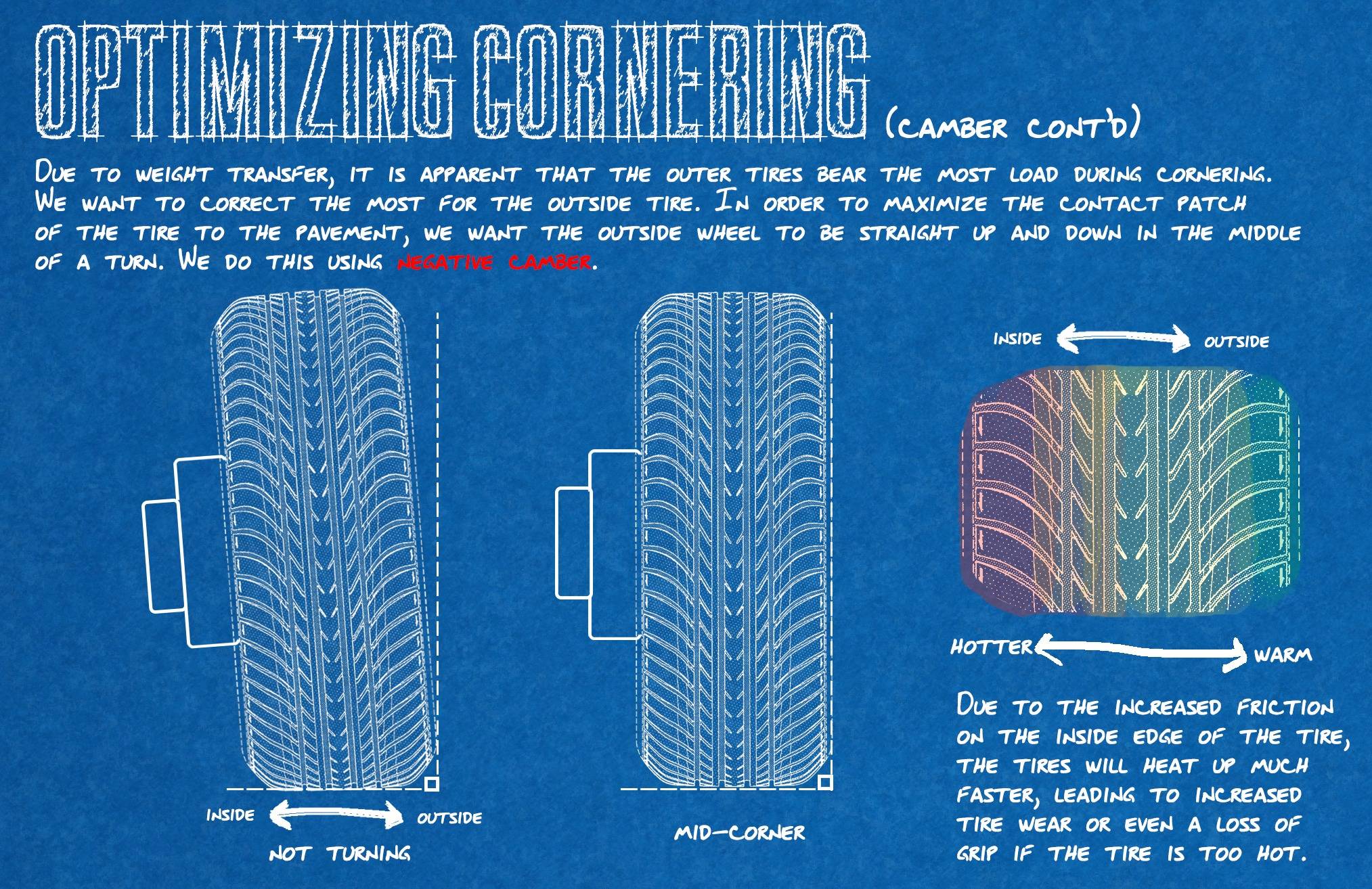
Toe: This is the angle that your wheels are oriented forwards. Think of skiing lessons. Toe in is the Pizza slice, toe out is going to have you doing the splits. Now hypothetically, perfectly zero toe would seem optimal, because any force oriented in a direction other than forward causes drag due to friction. But the differences in handling due to toe adjustments can outweigh the losses due to drag.
How to set toe: There is no formula for setting your toe really, it is all about what works best on your car. Toe out will cause a better turn in response, will slightly lower your steering effort, it will essentially make your front assembly work for you. Too much toe out will cause straight line instability at high speeds. Toe in has the opposite effect. So it is all about trade offs. I run about 1-2* of toe out on my track car.
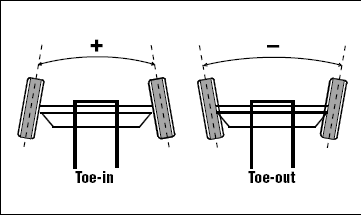
Caster: One of the more "so what" kind of topics for suspension geometry set up. Caster is the angle of the steering axis. Two examples: A bicycle front wheel has positive caster, a shopping cart wheel has negative caster on the front wheels. So it is a matter of the front wheels being pushed or pulled.
And this is largely overlooked aspect because it's hard to adjust caster without a new K member. Griggs Racing sells a more aggressive K member that pushes the front wheels further forward to increase the angle of caster as well as the Ackerman (angle of toe mid turn, i'll discuss later).
In short, caster largely acts like toe. Positive caster will help your turn in response, but can cause to an unstable car in the straights. The stock assembly is ever so slightly positive, adding more positive caster largely requires you to modify the fenders/wheel wells to accomodate for the more forward wheel.
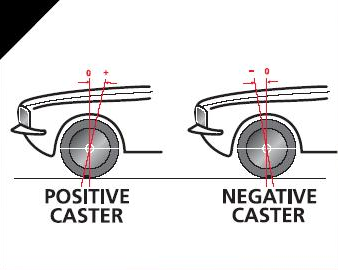
_______________________________________________
How to tune/correct handling behavior: These are guidelines, some changes will effect your ride more than others. And changing one attribute may effect the ride in a different way. For example, increasing the front ride height can eliminate oversteer mid-corner and on exit, but may also induce understeer on corner entry. So it is a balancing act of getting the right set up.
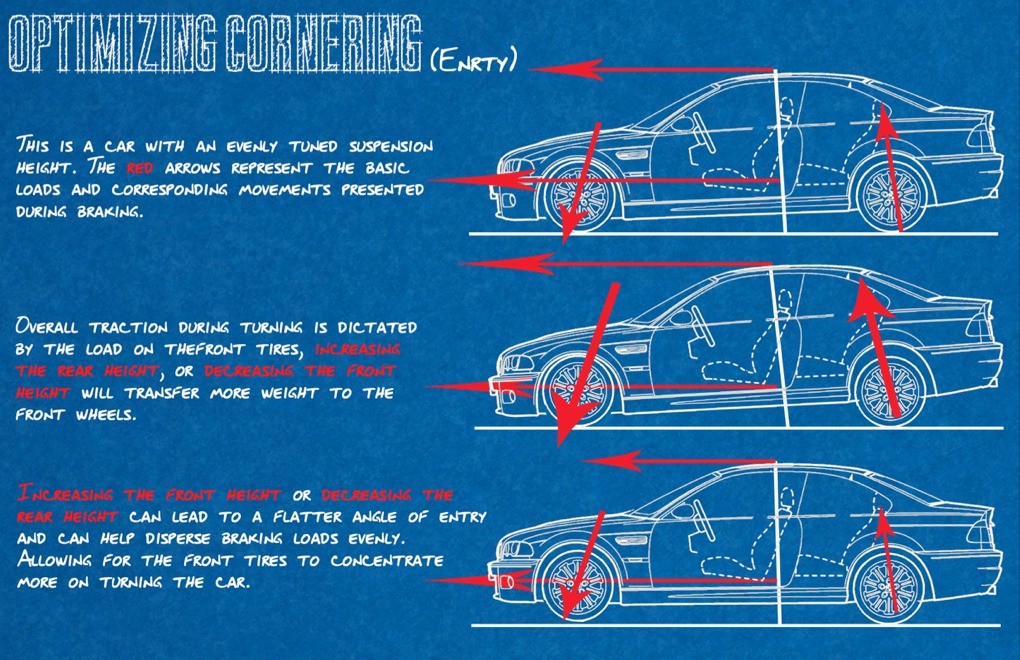
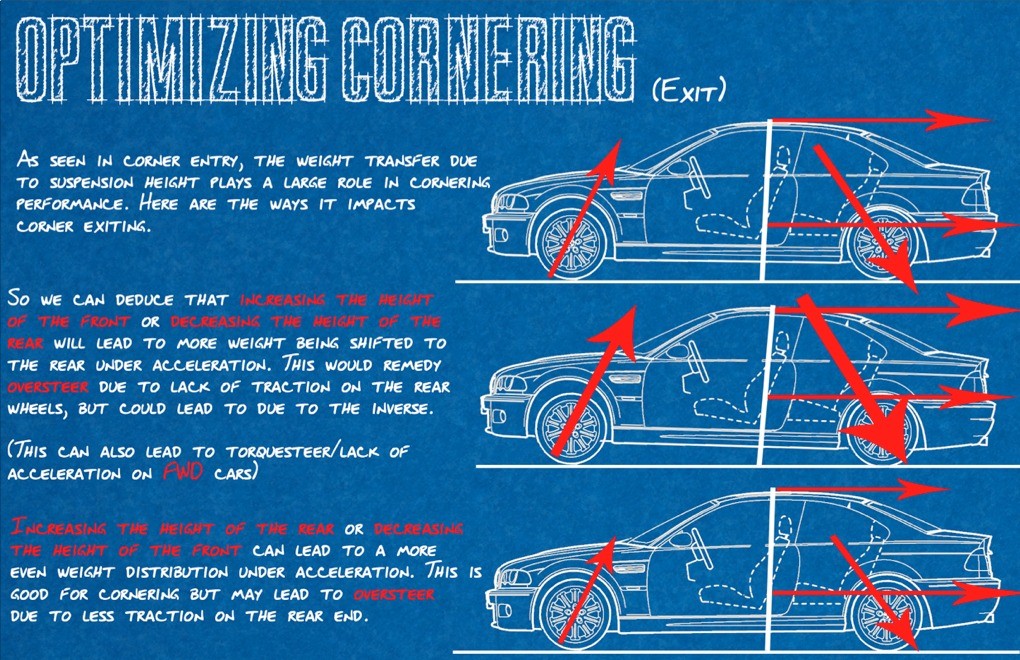
Understeer:
Corner entry:
If entry from High speed: Reduce front height. This will cause more of a weight shift to the front, putting more grip on the front tires.
If entry from Mid-speed: Increase positive caster, increase positive toe out, lower front height.
Mid-corner:
If roll is excessive (More common) : Increase sway bar stiffness, Increase front strut compression rate, increase front spring stiffness rate.
If there is no roll: Soften front spring rate, decrease front sway bar stiffness, increase negative camber, reduce strut compression rate, reduce overall ride height.
Corner Exit: Increase strut rebound rate or increase rear ride height.
Oversteer:
Corner Entry: More rear brake bias, lighter flywheel (most corner entry oversteer is due to throttle-lift)
Mid Corner:
High speed: Increase rear shock compression rate.
Mid Speed high roll: Increase rear sway bar stiffness, increase rear shock compression, increase rear spring rate, increase rear tire pressure, decrease rear ride height/increase front ride height, lay off the throttle!
Mid Speed no roll: Decrease rear ride height/increase front ride height, soften rear springs, soften shock compression rate, decrease rear shock rebound rate.
Corner Exit: Decrease rear ride height/increase front ride height, decrease rear tire pressure.
Adjusting tire pressure:
Properly setting your tire pressure can improve your handling dramatically. Generally speaking, a lower tire pressure will yield more grip, where as a higher pressure will yield more responsiveness. BUT! There is a big factor to consider known as tire deformation. In low PSI situations, the tires are very prone to deformation during cornering which can lead to smaller contact patches. In my race car I run up to 48-52 PSI in my front tires, but that is on a sanctioned 195/60 tire.
Low profile tires allow you to run slightly lower tire pressures while maintaining a manageable level of tire deformation. Just keep in mind that as your tires heat up, tire pressures will too. So a starting PSI of 45 may end up in the low 50's after a race. Adjust accordingly. The best way to set your tire pressure is simply trial and error through hot lapping.
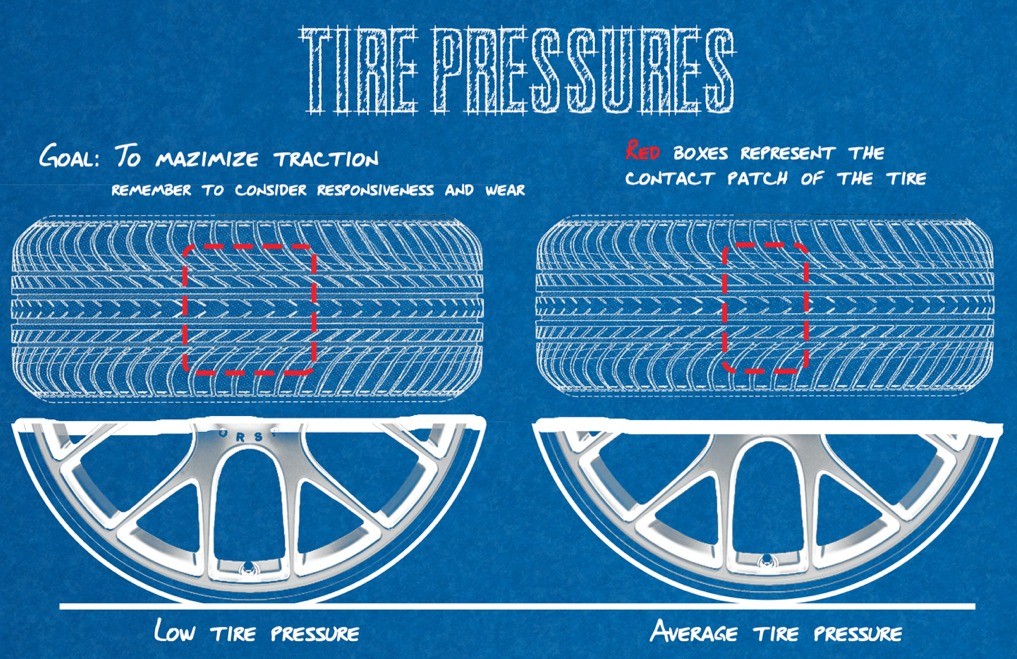
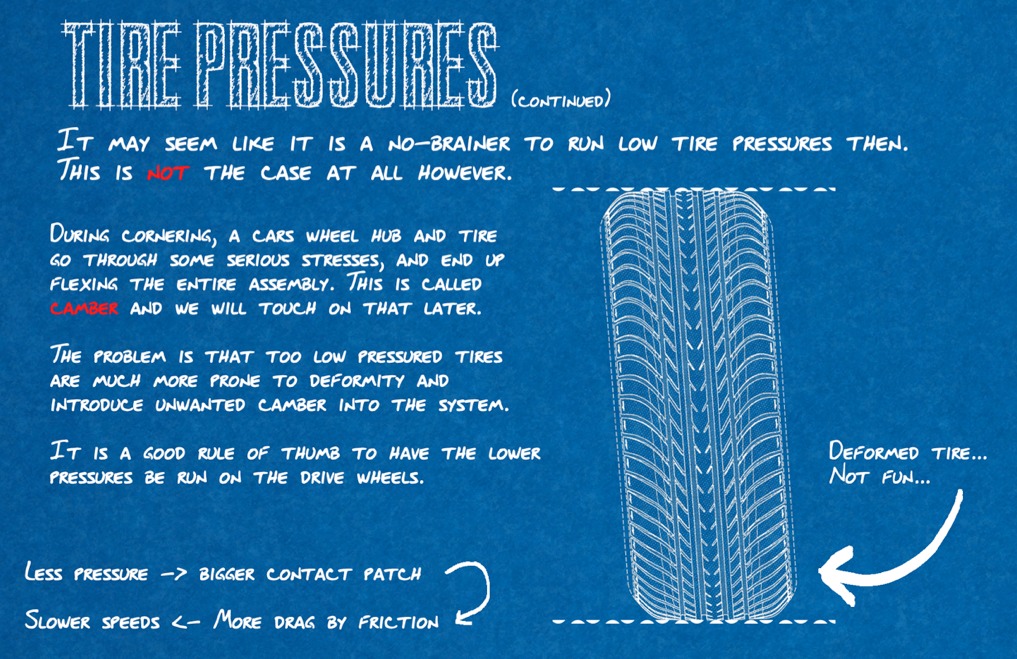
Shaved Tires:
In many race classes like mine, cars are limited to a certain degree of camber or a certain rating of tire grip (through the treadwear rating). Shaving tires is a little known technique that can improve your times greatly. It works by taking off the top coated layer of the new tire and progressively shaving camber into the tire to "cheat" a little more camber out of your set up. And when set up properly with your suspension geometry, it can lead to a larger overall contact patch due to more tire being on the road.
Here are my shaved tires. Notice the improved wear due to the more optimal degree of camber as well.
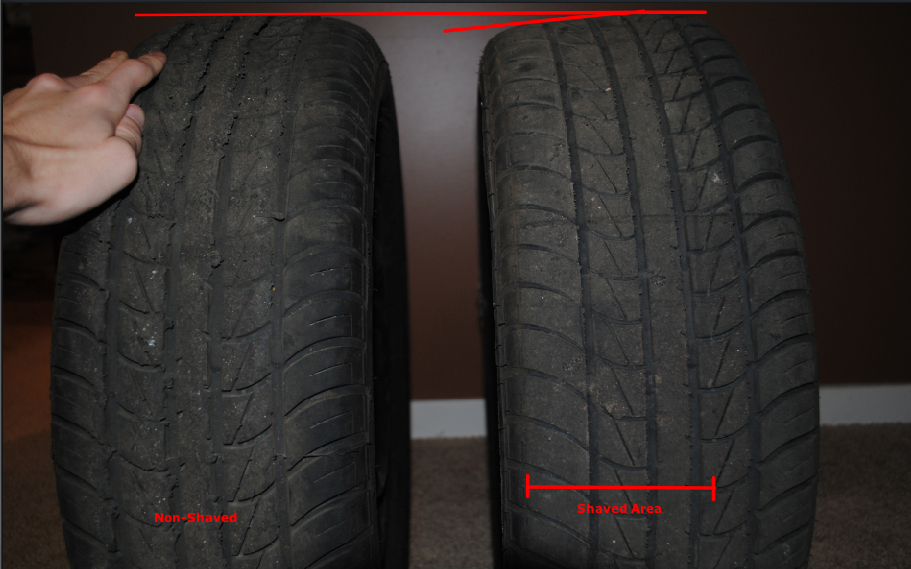
Stupid ads resizing stuff. Zoom your page out to read the blueprinted visuals. It makes the ad smaller apparently.
Camber: You should know the basis of camber. Negative and the wheels tilt inwards with the bottoms flared out more, positive is the opposite. You always want negative camber. Always.
How to set your camber: Run the track for a few laps. Make sure your tires are nice and hot. Then get a good point-specific laser temperature gauge and measure the inside edge, middle, and outside edge of each tire immediately after your run. Your goal is to make these temperatures even. So if your inside measures: 195* middle: 185* and outside: 175* then you are running too much negative camber. If these were in the opposite order, you would know that you aren't running enough camber.
Too many people go putting too much camber on their cars, but remember the more negative your outside tire is, your inside tire will be even more negative, so by setting your camber properly based on temperatures, you are maximizing your total contact patch. Where a too negative setting might be fine for the outside tire, your inside tire is barely contacting the pavement.




Toe: This is the angle that your wheels are oriented forwards. Think of skiing lessons. Toe in is the Pizza slice, toe out is going to have you doing the splits. Now hypothetically, perfectly zero toe would seem optimal, because any force oriented in a direction other than forward causes drag due to friction. But the differences in handling due to toe adjustments can outweigh the losses due to drag.
How to set toe: There is no formula for setting your toe really, it is all about what works best on your car. Toe out will cause a better turn in response, will slightly lower your steering effort, it will essentially make your front assembly work for you. Too much toe out will cause straight line instability at high speeds. Toe in has the opposite effect. So it is all about trade offs. I run about 1-2* of toe out on my track car.

Caster: One of the more "so what" kind of topics for suspension geometry set up. Caster is the angle of the steering axis. Two examples: A bicycle front wheel has positive caster, a shopping cart wheel has negative caster on the front wheels. So it is a matter of the front wheels being pushed or pulled.
And this is largely overlooked aspect because it's hard to adjust caster without a new K member. Griggs Racing sells a more aggressive K member that pushes the front wheels further forward to increase the angle of caster as well as the Ackerman (angle of toe mid turn, i'll discuss later).
In short, caster largely acts like toe. Positive caster will help your turn in response, but can cause to an unstable car in the straights. The stock assembly is ever so slightly positive, adding more positive caster largely requires you to modify the fenders/wheel wells to accomodate for the more forward wheel.

_______________________________________________
How to tune/correct handling behavior: These are guidelines, some changes will effect your ride more than others. And changing one attribute may effect the ride in a different way. For example, increasing the front ride height can eliminate oversteer mid-corner and on exit, but may also induce understeer on corner entry. So it is a balancing act of getting the right set up.


Understeer:
Corner entry:
If entry from High speed: Reduce front height. This will cause more of a weight shift to the front, putting more grip on the front tires.
If entry from Mid-speed: Increase positive caster, increase positive toe out, lower front height.
Mid-corner:
If roll is excessive (More common) : Increase sway bar stiffness, Increase front strut compression rate, increase front spring stiffness rate.
If there is no roll: Soften front spring rate, decrease front sway bar stiffness, increase negative camber, reduce strut compression rate, reduce overall ride height.
Corner Exit: Increase strut rebound rate or increase rear ride height.
Oversteer:
Corner Entry: More rear brake bias, lighter flywheel (most corner entry oversteer is due to throttle-lift)
Mid Corner:
High speed: Increase rear shock compression rate.
Mid Speed high roll: Increase rear sway bar stiffness, increase rear shock compression, increase rear spring rate, increase rear tire pressure, decrease rear ride height/increase front ride height, lay off the throttle!
Mid Speed no roll: Decrease rear ride height/increase front ride height, soften rear springs, soften shock compression rate, decrease rear shock rebound rate.
Corner Exit: Decrease rear ride height/increase front ride height, decrease rear tire pressure.
Adjusting tire pressure:
Properly setting your tire pressure can improve your handling dramatically. Generally speaking, a lower tire pressure will yield more grip, where as a higher pressure will yield more responsiveness. BUT! There is a big factor to consider known as tire deformation. In low PSI situations, the tires are very prone to deformation during cornering which can lead to smaller contact patches. In my race car I run up to 48-52 PSI in my front tires, but that is on a sanctioned 195/60 tire.
Low profile tires allow you to run slightly lower tire pressures while maintaining a manageable level of tire deformation. Just keep in mind that as your tires heat up, tire pressures will too. So a starting PSI of 45 may end up in the low 50's after a race. Adjust accordingly. The best way to set your tire pressure is simply trial and error through hot lapping.


Shaved Tires:
In many race classes like mine, cars are limited to a certain degree of camber or a certain rating of tire grip (through the treadwear rating). Shaving tires is a little known technique that can improve your times greatly. It works by taking off the top coated layer of the new tire and progressively shaving camber into the tire to "cheat" a little more camber out of your set up. And when set up properly with your suspension geometry, it can lead to a larger overall contact patch due to more tire being on the road.
Here are my shaved tires. Notice the improved wear due to the more optimal degree of camber as well.

Stupid ads resizing stuff. Zoom your page out to read the blueprinted visuals. It makes the ad smaller apparently.

